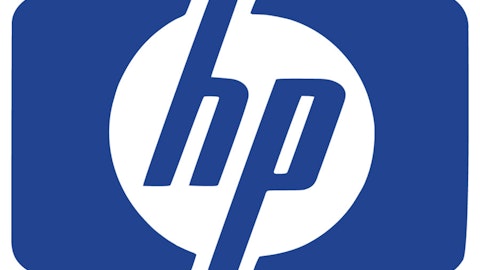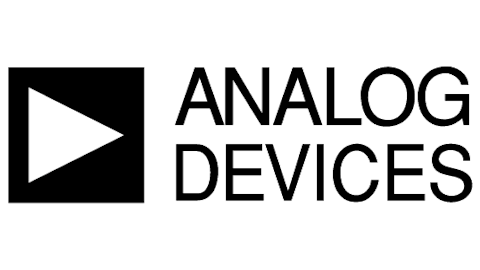Texas Instruments Incorporated (NASDAQ:TXN) invented the first transistor radio in 1954 and invented the first integrated circuit in 1958. Ever since then, Texas Instruments has been a major player in the technology sector. However, like most technology stocks, it took a beating in 2000 and has been struggling ever since. Is Texas Instruments now poised for a rebound?

The News
In its recent fourth quarter earnings release, Texas Instruments reported that earnings beat analyst’s predictions by coming in at .36 cents per share; why then the near 1% drop in stock price? Perhaps it has much to do with Texas Instruments’ Q1 forecast being well below expectations. Texas Instruments reported that this expected downturn is due in large part to its exit from the wireless market.
However, while everyone focused on Texas Instruments’ earning report, many investors missed the following:
January 4, 2013: “Texas Instruments introduced the industry’s first single-chip, front-end power management unit (PMU) for battery-powered applications based on ARM Cortex A9 and A15 processors.”
January 29, 2013: “Texas Instruments announced the Smart Data Concentrator Evaluation Module (EVM) at DistribuTECH 2013.”
These two inventions are game changers. The EVM module can slash up to nine months from development time with advanced hardware and software functionalities that will allow mobile technology manufactures to reduce their lead times in bringing a new product to market. The PMY can reduce energy consumption by providing up to 95% power efficiency and reduces circuit board space requirements by 60%.
These two developments will have a significant impact on the tablet and portable electronic market. Consider the overall market for tablets and portable electronics in North America and the emerging markets in Asia, and you can get an idea of how “big” this could be for Texas Instruments.
The Market
According to recent reports, the portable battery market alone will reach $30.5 billion by 2015. When you consider that Texas Instruments’ hardware can increase battery efficiency to 95%, you can begin to see how significant this technology will become.
Over one billion smartphones were sold in 2011 alone, and mobile device sales, with tablets in particular, will grow by 7%; “IDC reported in December of 2012 that 122.3 million tablets will be sold in 2012, rising to 172.4 million units in 2013 and 282.7 million units in 2016.”
Furthermore, energy efficiency has become a very hot topic in India and North America. In fact, according to TI; “Customers are increasing design activity for applications that help improve energy efficiency, such as LED lights used in street lights, and renewable energy applications”
Next consider that the “analog” market alone totaled $42 billion worldwide in 2011 and TI’s Analog segment received total sales of $6 billion for that year. With the advent of this technology, expect to see revenues climb. If you consider for a moment that if only a fraction of mobile technology manufactures wished to increase power consumption efficiency and reduce circuit board space in order to gain a marketing edge against its competitors, under current technology, they would have to turn to Texas Instruments.
According to Texas Instruments, this single-chip front-end power management unit can:
· Increase battery run time by 10 to 20%
· Lower PCB costs by up to 20%
· Reduce total solution size by 60%
· Control power to sub-systems
· Designed for all processors
The Competition
The single-chip, front-end power management unit (PMU) introduced by Texas Instruments is the industries “first.” Furthermore, Texas Instruments made a very smart move by removing one of its largest competitors by acquiring National Semiconductor back in 2011.
With this acquisition, Texas Instruments now has the largest sales and applications team in the world; by comparison, this team is three to four times larger than its closest competitor. Texas Instruments closest competitors are Applied Materials, Inc. (AMAT), General Electric Company (NYSE:GE), STMicroelectronics N.V. (ADR) (STM) and QUALCOMM, Inc. (NASDAQ:QCOM).
Currently, Texas Instruments is looking at two key competitors, that is QUALCOMM and STMicroelectronics. Here is a comparison:
As we can see, Qualcomm is by far the largest competitor that Texas Instruments is contending with; however, Qualcomm is in a run for its money as Texas Instruments is striking back hard to regain its place as the number one Smartphone CPU maker. With the advent of its two newest technologies, they may just do it.
Currently, the OMAP5 smartphone platform is the industry standard and Texas Instruments performed a bench mark test using their new ARM Cortex A15 cores against NVIDIA Corporation (NASDAQ:NVDA)’s Tegra 3 quad core. Texas Instruments was almost twice as fast. The other decisive factor, devices powered by OMAP5 start arriving on the market this quarter (first quarter 2013). Furthermore, while Texas Instruments is working hard at taking down Qualcomm and NVIDIA Corporation (NASDAQ:NVDA), it has further insulated its core business from both these competitors by shedding its wireless business, which only accounted for 3% of Texas Instruments business.
The Bottom Line
Texas Instruments is sitting on two new technologies; one of which is a first in the industry with absolutely no competition. However, with its stock price sitting at a strong resistance level, the smart money will look for a breakout over $35 per share as an indicator to go long on Texas Instruments, and it doesn’t hurt that Texas Instruments pays a hefty dividend rate of 2.51%.
The article 2 Overlooked Announcements You Can Capitalize On Now originally appeared on Fool.com and is written by Maxwell Fisher.
Copyright © 1995 – 2013 The Motley Fool, LLC. All rights reserved. The Motley Fool has a disclosure policy.




